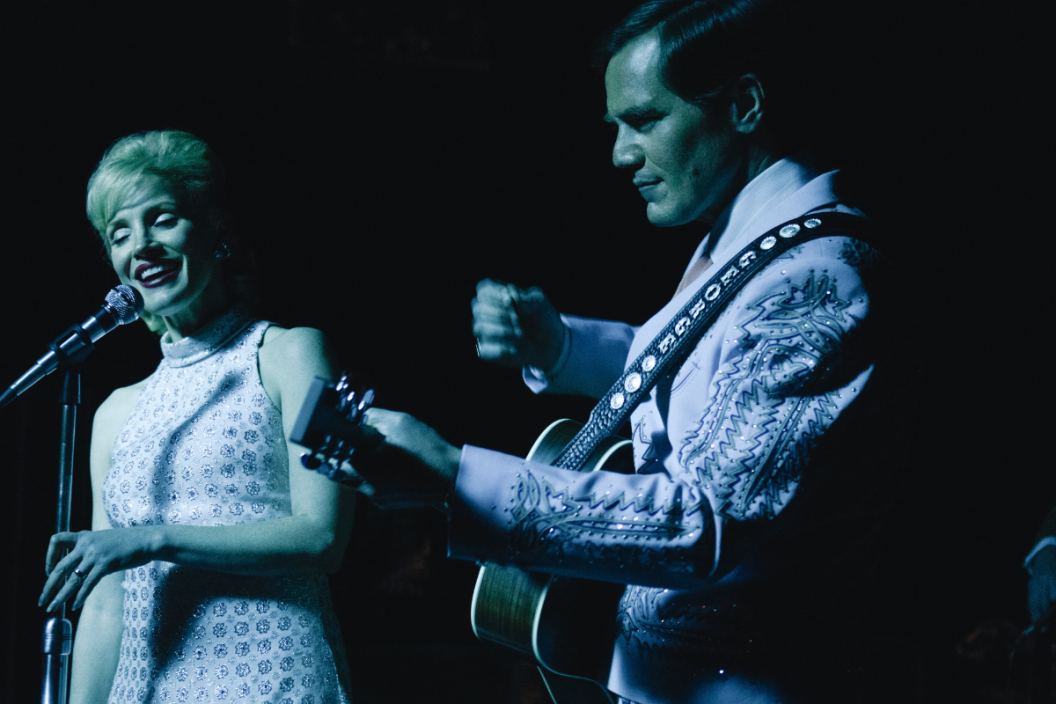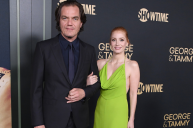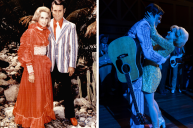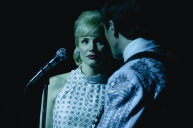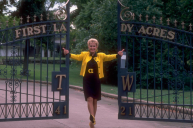When you're creating a series about two of the most towering figures in country music, the details matter. George & Tammy, the SHOWTIME limited series about the love story between George Jones and Tammy Wynette gets those details right -- down to the last rhinestone, from the songs to the production design, which required the re-creation of some of the most hallowed places in country music lore. Over the course of six episodes, George & Tammy, starring Jessica Chastain and Michael Shannon, ushers viewers through amazing technicolor world of Nudie's Rodeo Tailors to the more subdued hues of George Jones' Possum Holler. Through it all, George & Tammy production designer Jonah Markowitz let the complicated relationship between not two country megastars, but two heartbroken people, guide the process.
Videos by Wide Open Country
"I was trying to represent what state they were in in their relationship," Markowitz says. "At the end of the day, I really saw this as a relationship movie more than a big sweeping music biopic, which it is," Markowitz says. "But you can tell from the way it's shot and the way it's written that the creators really wanted this to be a personal story about what it was like to be these people. It's not about the thundering huge auditoriums and seeing a hundred thousand fans."
We caught up with Markowitz to discuss how the series brought the world of George and Tammy to life, from creating a mid-century modern masterpiece to a '70s Christmas at the Jones-Wynette estate.
Recreating Country Music History
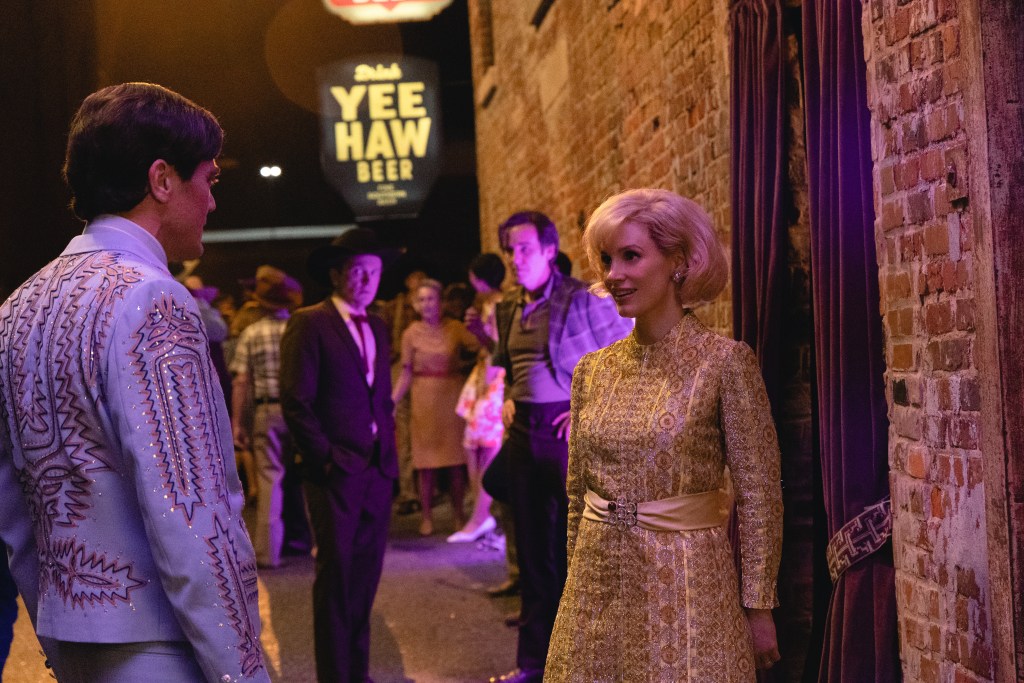
Dana Hawley/Courtesy of SHOWTIME
George & Tammy was filmed in Wilmington, N.C., but the crew went to great lengths to re-create Tennessee history.
"Because a lot of the places we were doing were very, very historic, like the Ryman Auditorium, Grand Ole Opry, the Quonset Hut recording studio, First Lady Acres -- there were sources of research for those things. Things like the Ryman Auditorium and the Grand Ole Opry, you know, people were used to seeing that every week. That was really important to get exactly, exactly right," Markowitz tells Wide Open Country. "So we worked with people that had worked there and different archivists and different sort of communities for each place. With the Quonset Hut, we found a lot of research. One thing that was difficult was finding color research of the Quonset Hut. We found like one image. That was like something that we kind of had to fill in. I work a lot with pallete, so we took some liberties just because we really couldn't find a lot of of color stuff there."
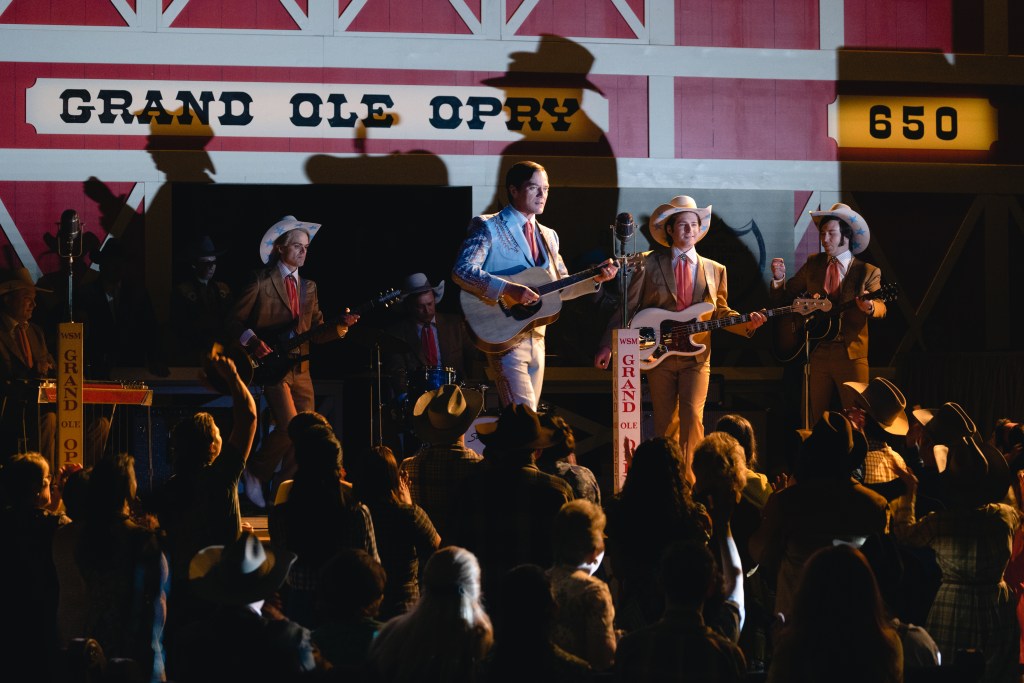
Dana Hawley/Courtesy of SHOWTIME
Markowitz says one of the most daunting tasks was creating a replica of an entrance to the Ryman Auditorium, perhaps one of the most famous doors in the entire state of Tennessee.
"In the first opening scene, when Tammy's running down the street in Nashville, she comes to the back door of the Ryman Auditorium and they go in to see George Jones perform. We shot that outside part in North Carolina and that stage door is like infamous. For some reason that door is like really famous," Markowitz says. "It was right across from Tootsie's in the alley in Nashville, right off Broadway. So we actually built that whole arch and the stairs going up and the door and 30 or 40 or 50 feet of an alley, then green screened the rest. We wanted to get that door so perfect, not only to get the auditorium right, but people really know that door. That's where every artist that performed at the Grand Ole Opry walked in and out of. It was kind of like an allegory in a way of Tammy starting -- obviously she was accomplished already -- but meeting George Jones, starting that part of her career, going in that door. We got to really play with fun things like that."
Another legendary country music locale featured in the series is the Quonset Hut Studio, a recording studio owned by Harold and Owen Bradley where Brenda Lee, Patsy Cline, Wynette and more recorded classics. Markowitz and crew built the studio almost at full scale on a sound stage.
Other elements were less historically revered, but equally important to get right. When it came to nailing the details of stage backdrops and tour buses, Georgette Jones, the daughter of Jones and Wynette, whose book The Three of Us: Growing Up With Tammy & George is the basis for the series, was an incredible resource. Georgette shared details about everything from what a George & Tammy concert would look like to the details of Wynette's tour bus.
"One thing we couldn't find was their outdoor performances -- what the backdrops were. We couldn't find anything -- not a single photograph of what they traveled with," Markowitz says. [We got] fun things from [Georgette Jones], like 'Well, in the tour bus Tammy always liked to sit in this seat because she didn't get nauseous here.' So we always built a bench for her right behind this, facing this way.'"
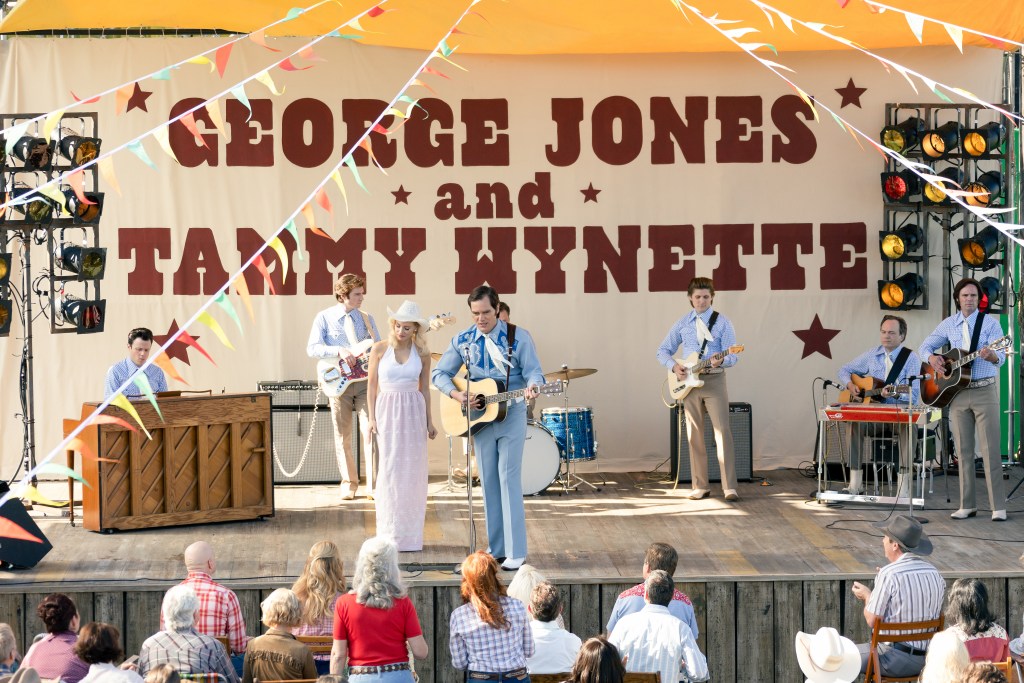
Dana Hawley/Courtesy of SHOWTIME
Designing a '70s Christmas at the Jones-Wynette House
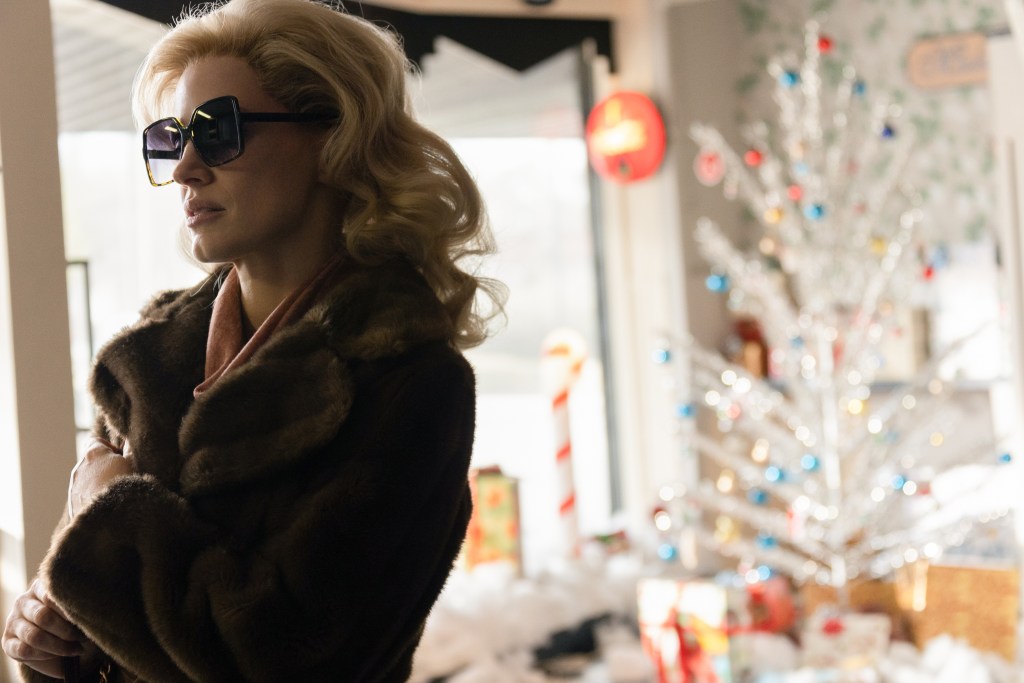
Photo credit: Dana Hawley/Courtesy of SHOWTIME.
For episode four, "The Grand Tour," Markowitz created Christmas at George & Tammy's mansion, the setting for a night that starts out as a happy holiday gathering and heads toward a harrowing conclusion.
"The Christmas episode is kind of a pinnacle moment in the story. It happens right about halfway through the story and it's sort of where the troubles start coming up in the relationship and the ugly demons that existed between George and Tammy in their personal life, in their professional life, it's where it kind of all culminates," he says. "They've just bought this house in the previous episode -- this country mansion. I wanted to do something really colorful for Christmas and I wanted to stay away from just doing red and green and as an overarching style in the show, Tammy's color is sort of yellow and George's color is sort of green, but when they move into this house together the walls are this shocking teal blue color."
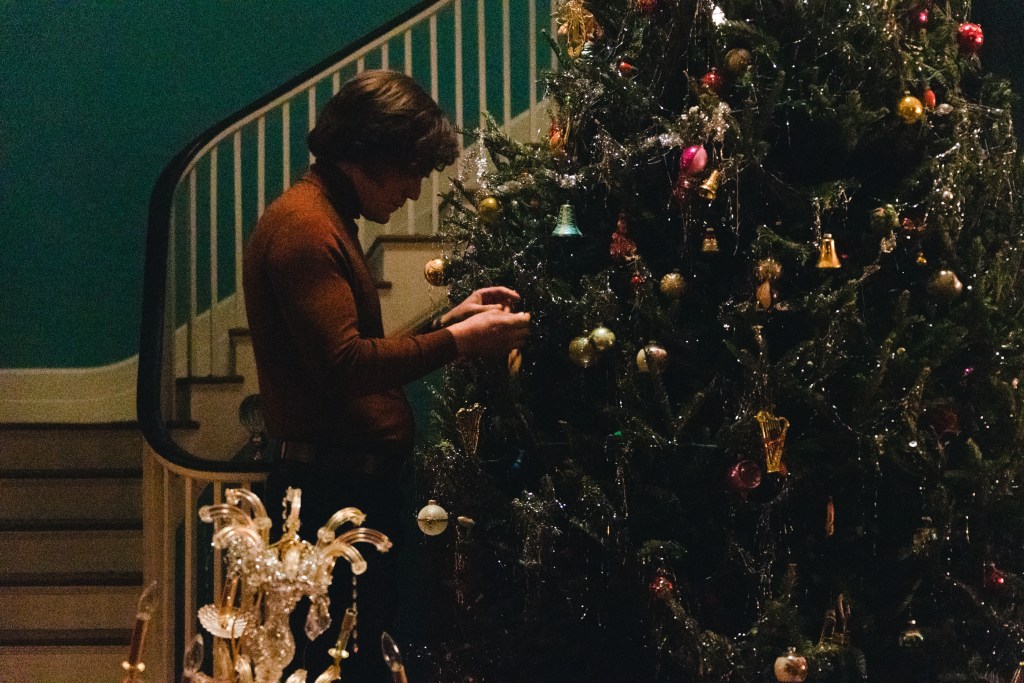
Dana Hawley/Courtesy of SHOWTIME
"We really wanted to play with palette in a different way on this show and not use the same colors that we're so used to seeing the '70s represented -- oranges and browns and avocados -- all things that were there, but there were also all these great shocking primary intense colors. Especially in the music world, everything from country to Elvis, it's bright. I wanted this moment to feel like, okay, they're finally a family. They've landed, it's colorful, it's really exciting and then everything kind of goes wrong...Conceptually, overall, I wanted to make it a red and blue Christmas because what happens at the end of the episode is the cops show up and all of the red and blue sirens are flashing in the house," Markowitz continues. "Instead of doing a red and green Christmas, we did this red and blue Christmas. I think it worked out really well and in a way it's such a colorful part of the series. That house is just so strikingly colorful that it really like heightened all the drama that happens there."
Designing Tammy Wynette's Mid-Century Estate, First Lady Acres
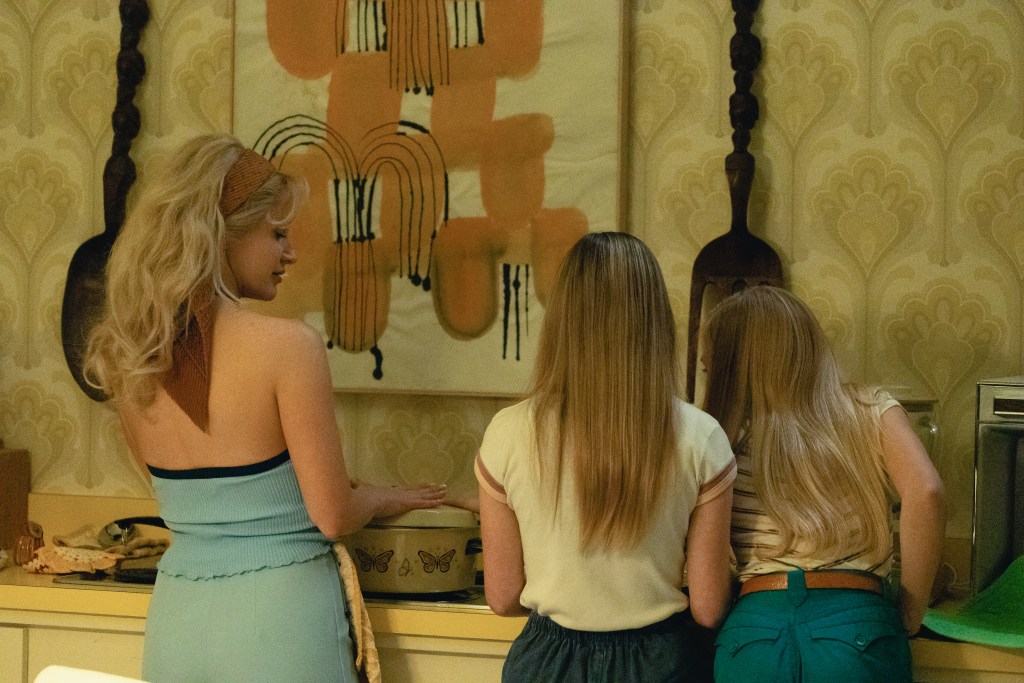
Dana Hawley/Courtesy of SHOWTIME
Wynette lived in her mid-century modern Nashville estate, dubbed First Lady Acres, until 1992. The home represented a new start for Tammy and took cues from the country queen's personal decorating style when designing the house used for the set, which was based in North Carolina.
"With Tammy's house, First Lady Acres, we didn't try to do an exact replication," Markowitz says. "We wanted it to be accurate and reflect, character wise, why she had moved in at that point of her life, what type of house she had. But we wanted it to fit into the overall look and feel of our show. It was a real honor to design a lot of those spaces and to get those historical things accurate."
Re-Making Vegas
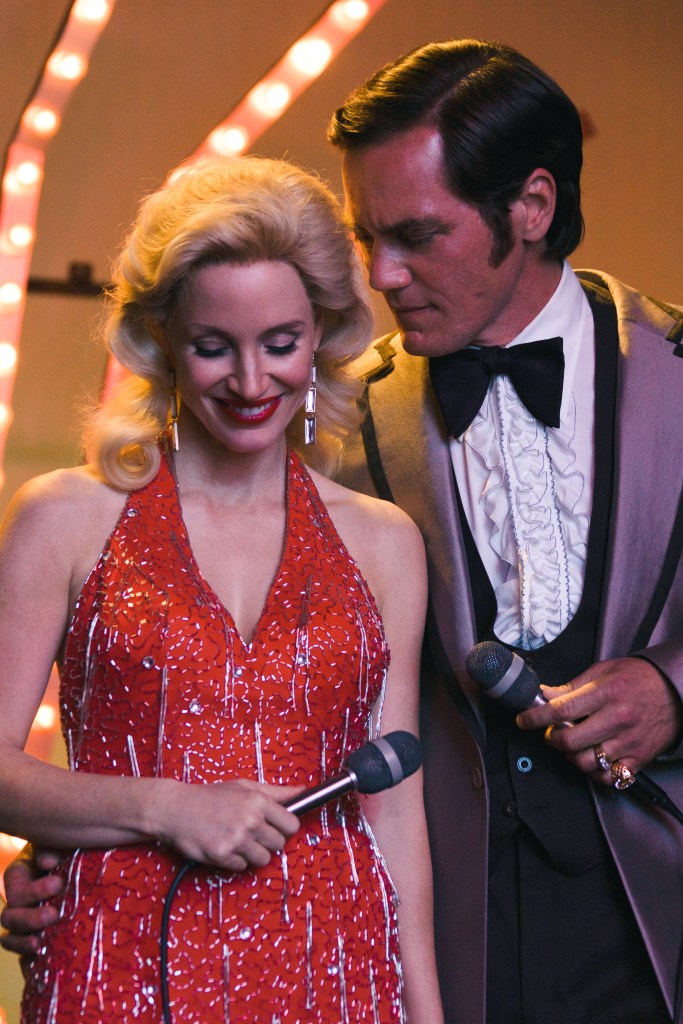
Dana Hawley/Courtesy of SHOWTIME
In episode three, George and Tammy are booked to play Las Vegas. However, the incredible opportunity leads Tammy to wonder whether she can count on George. Markowitz says creating the swanky Vegas hotel room was an opportunity to create a set unlike any other in the series.
"The Landmark Hotel, another real location, isn't there anymore. It was demolished in the '80s or '90s," Markowitz says. "This really important moment happens in Vegas where Tammy goes and George stands her up and she's completely left alone. Before that even happens, they're already super nervous because they're the first country headliners, so there's all this pressure on them. I wanted them to feel really, really out of place. I wanted this hotel suite to be huge. We started looking at what suites were like in the '60s and '70s...and they were tiny...So I said we just have to throw reality to the wind at this point. I tripled the size of what the room was in real life...I made it 30-foot tall ceilings. I put a second level on it with this big cutout circular balcony that looked down at the bed. Everyone was like 'That's so weird. What is it for?' And I'm like, 'It's for the one shot when she's alone...and it ended up in the show...I just wanted the camera to be able to get back and see her alone in this enormous room that was all colors that weren't anywhere else in the [series] -- golds and blacks and metallics -- and just make her feel out of place."
On George Jones' Possum Holler
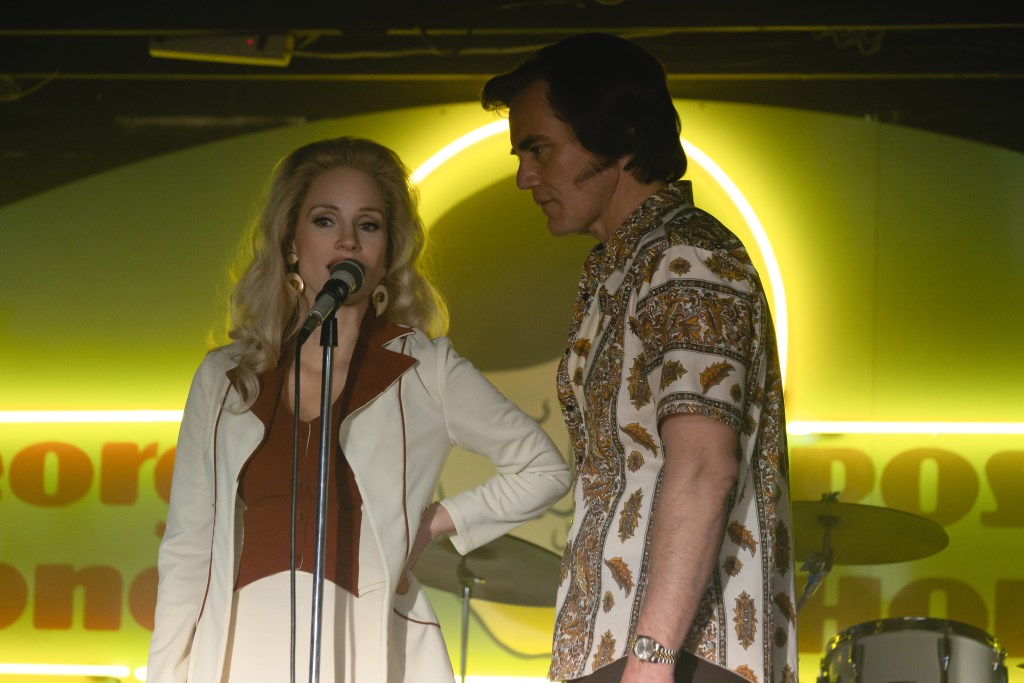
Dana Hawley/Courtesy of SHOWTIME
Another real life location featured in George & Tammy was George Jones' celebrity hangout Possum Holler. Though Jones opened the original Possum Holler in downtown Nashville during the height of his career, the series features the club during an era in which Jones was struggling with addiction. In the show, Possum Holler depicts a refuge -- though not always a healthy or happy one -- for Jones.
"I feel like we probably talked about that set more than any other set on the entire show... it's this dark period in his life and he's in his worst days. At the same time, there's the consideration of well, how did he see it?" Markowitz says. " It was a dark point in his life, but there was always a conversation of what point of view are we showing it from? Do we want it to be like really depressing and do we want to just feel super sorry for him? Or do we want to feel like he has false hope that maybe he'll have a comeback, or he's found comfort in this thing that's not real? Tonally, it was kind of complicated to get right and there were some disagreements...It's a collaborative art form. So we all came to a realization. We replicated a lot...There was this big painted sign of [Jones'] face and it said Possum Holler, which we [recreated]. I added some neon into that set just to bring us slowly into the '80s a little bit...That's an instance where it was very close to what Possum Holler looked like, but then we added something of our own that was in his color palette that kind of just made everything work."
George & Tammy airs on SHOWTIME on Sundays at 9 p.m. ET.
